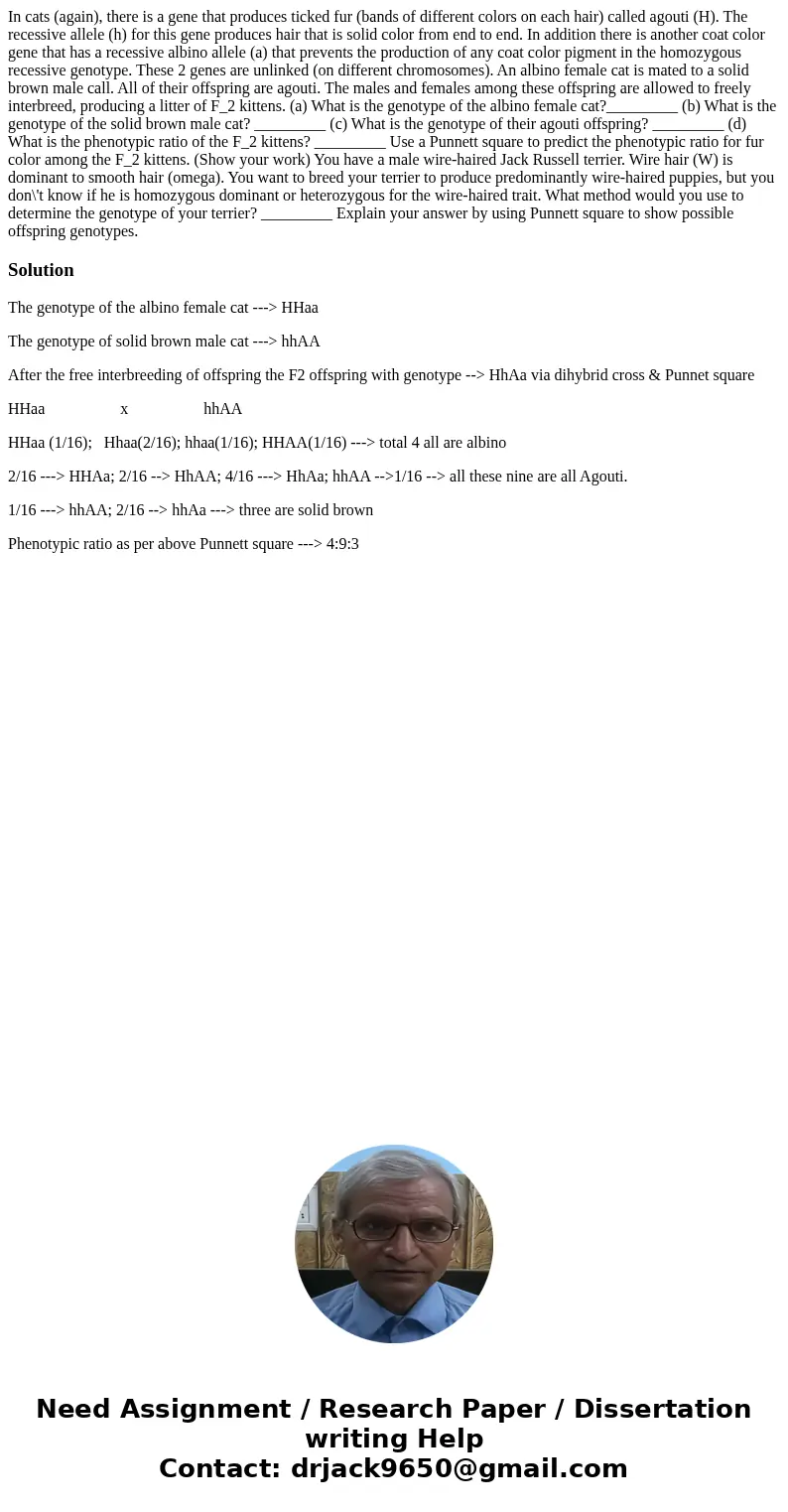In cats again there is a gene that produces ticked fur bands
In cats (again), there is a gene that produces ticked fur (bands of different colors on each hair) called agouti (H). The recessive allele (h) for this gene produces hair that is solid color from end to end. In addition there is another coat color gene that has a recessive albino allele (a) that prevents the production of any coat color pigment in the homozygous recessive genotype. These 2 genes are unlinked (on different chromosomes). An albino female cat is mated to a solid brown male call. All of their offspring are agouti. The males and females among these offspring are allowed to freely interbreed, producing a litter of F_2 kittens. (a) What is the genotype of the albino female cat?_________ (b) What is the genotype of the solid brown male cat? _________ (c) What is the genotype of their agouti offspring? _________ (d) What is the phenotypic ratio of the F_2 kittens? _________ Use a Punnett square to predict the phenotypic ratio for fur color among the F_2 kittens. (Show your work) You have a male wire-haired Jack Russell terrier. Wire hair (W) is dominant to smooth hair (omega). You want to breed your terrier to produce predominantly wire-haired puppies, but you don\'t know if he is homozygous dominant or heterozygous for the wire-haired trait. What method would you use to determine the genotype of your terrier? _________ Explain your answer by using Punnett square to show possible offspring genotypes.
Solution
The genotype of the albino female cat ---> HHaa
The genotype of solid brown male cat ---> hhAA
After the free interbreeding of offspring the F2 offspring with genotype --> HhAa via dihybrid cross & Punnet square
HHaa x hhAA
HHaa (1/16); Hhaa(2/16); hhaa(1/16); HHAA(1/16) ---> total 4 all are albino
2/16 ---> HHAa; 2/16 --> HhAA; 4/16 ---> HhAa; hhAA -->1/16 --> all these nine are all Agouti.
1/16 ---> hhAA; 2/16 --> hhAa ---> three are solid brown
Phenotypic ratio as per above Punnett square ---> 4:9:3

 Homework Sourse
Homework Sourse